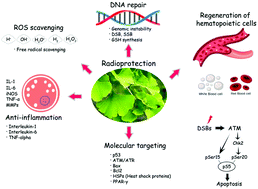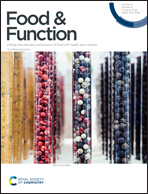Potentialities of Ginkgo extract on toxicants, toxins, and radiation: a critical review
Abstract
Exposure to toxins is a severe threat to human health and life in today's developing and industrialized world. Therefore, identifying a protective chemical could be valuable and fascinating in this case. The purpose of this article was to bring together thorough review of studies on Ginkgo biloba to aid in the creation of ways for delivering its phytoconstituents to treat toxicants and radiation. This review gathered and evaluated studies on the defensive impact of Ginkgo biloba extract (GBE) against toxicities caused by toxic chemical agents (such as lead, cadmium, and aluminum), natural toxins (for example, lipopolysaccharide-induced toxicity and damage, gossypol, latadenes, and lotaustralin), and radiation (for example, gamma, ultra-violet, and radio-frequency radiation). According to this review, GBE has a considerable therapeutic effect by influencing specific pathophysiological targets. Furthermore, GBE has antioxidant, anti-inflammatory, anti-apoptotic, and antigenotoxicity properties against various toxicities. These are due to flavone glycosides (primarily isorhamnetin, kaempferol, and quercetin) and terpene trilactones (ginkgolides A, B, C, and bilobalide) that aid GBEs' neutralizing effect against radiation and toxins by acting independently or synergistically. This will serve as a reference for the functional food, cosmetic, and pharmaceutical industries worldwide.

- This article is part of the themed collection: Food & Function Review Articles 2022


 Please wait while we load your content...
Please wait while we load your content...